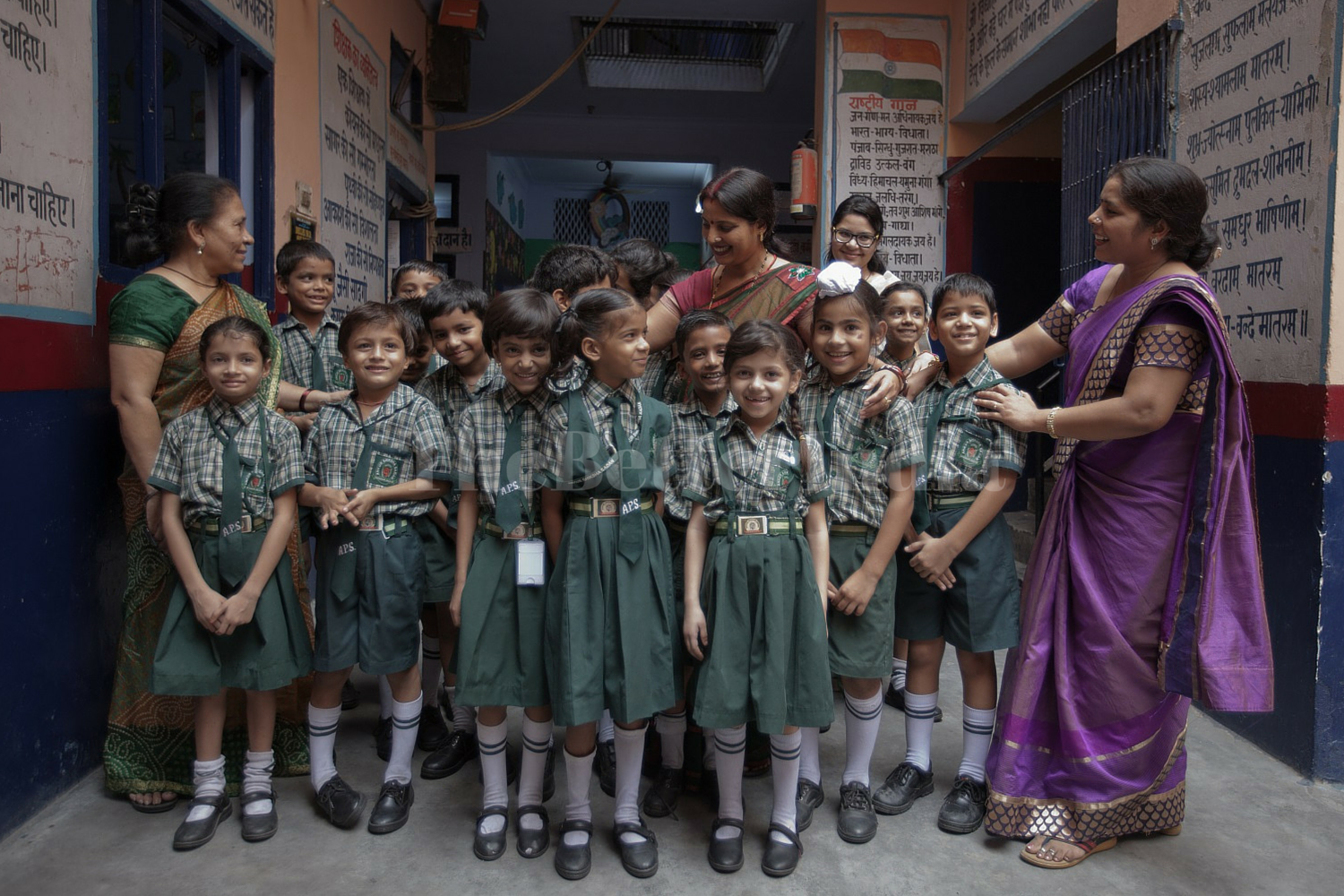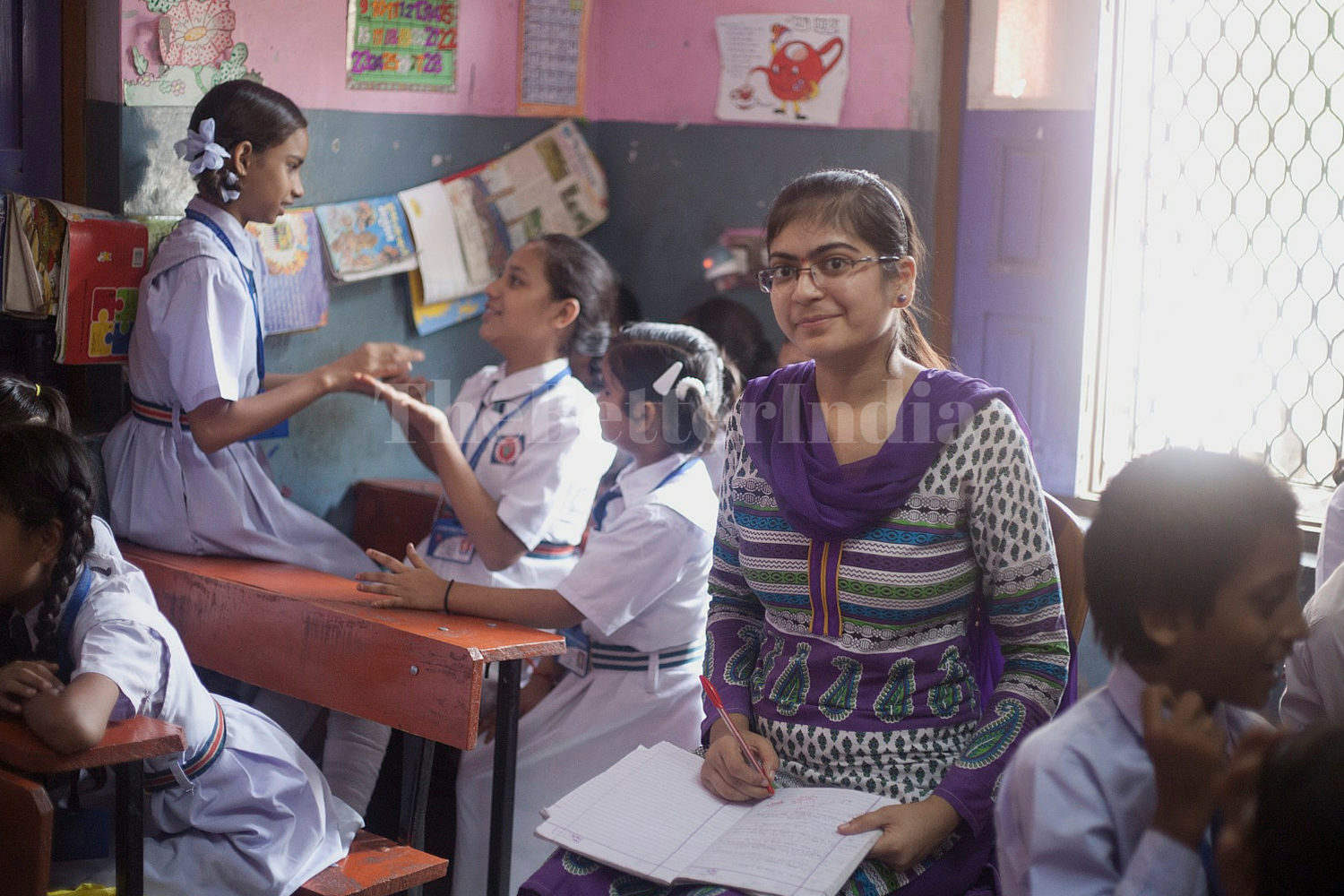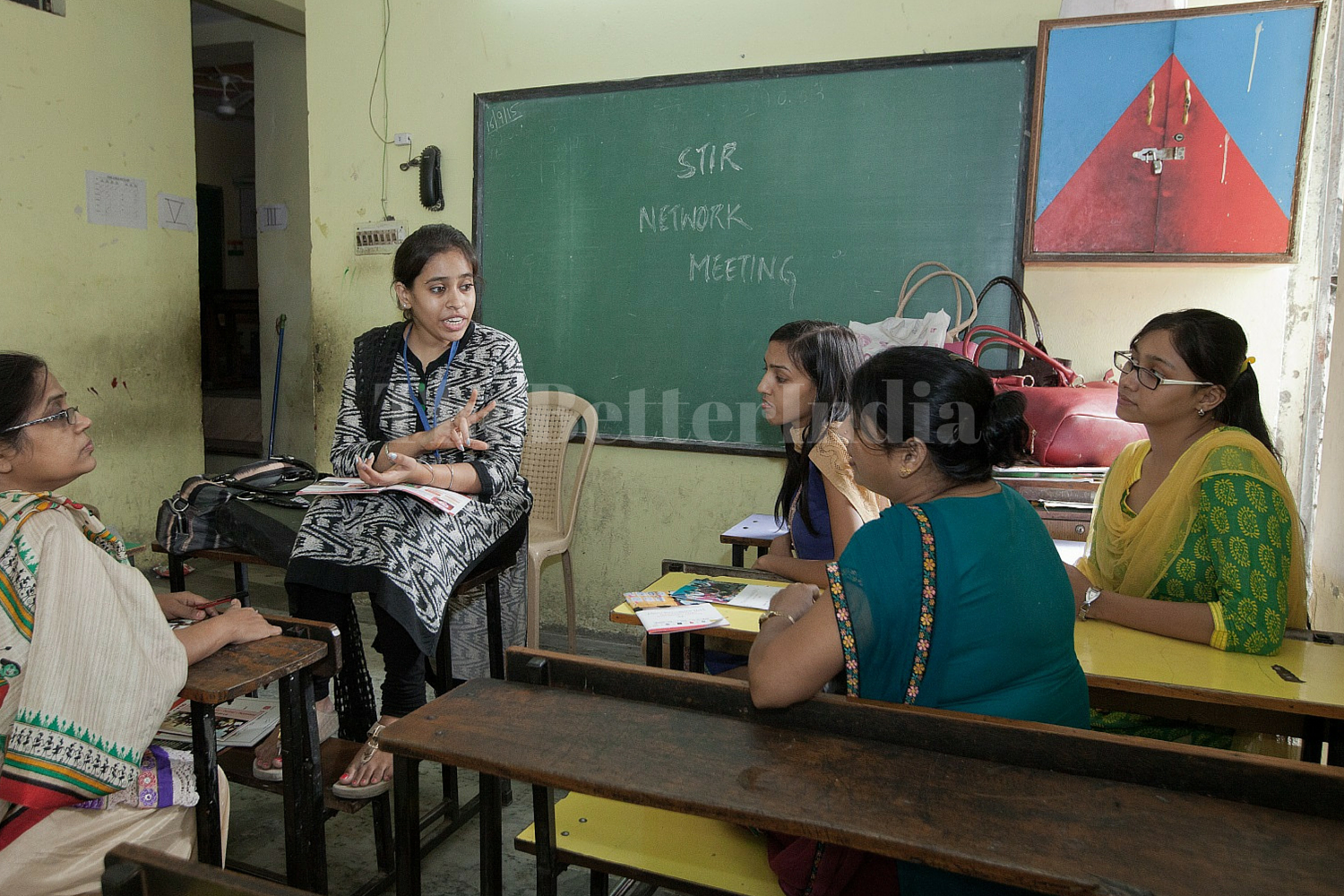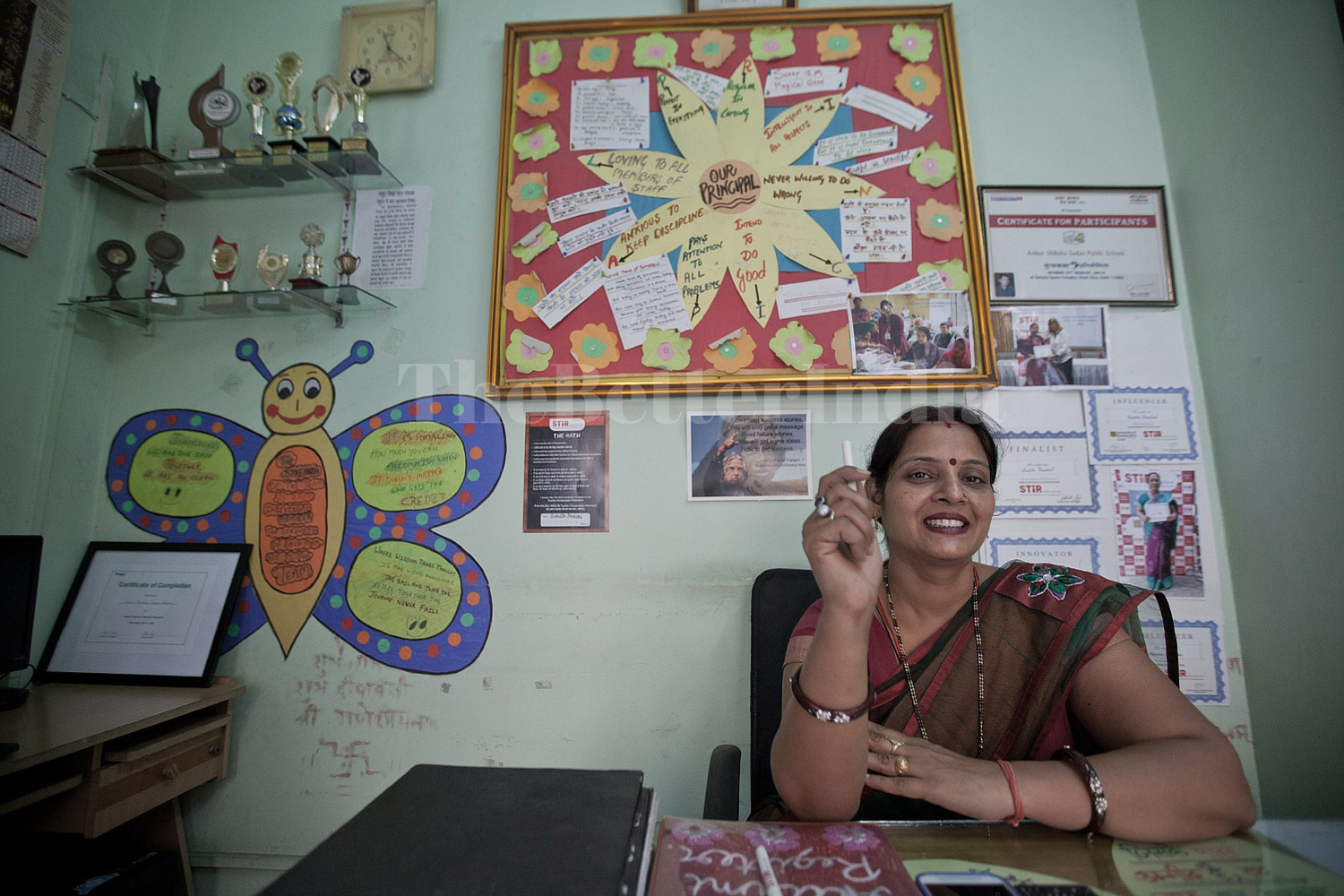An Offline Social Network for Teachers Is Changing the Education Scenario in Northern India
Speak of the sad state of education today and people are quick to blame teachers – their lack of motivation, interest in making a quick buck through tuitions, absenteeism, etc. But here’s one organization that does not just appreciate their efforts but increases their motivation to teach. It gives them the tools and support necessary to become problem solvers in a larger movement for the betterment of education.

Speak of the sad state of education today and people are quick to blame teachers – their lack of motivation, interest in making a quick buck through tuitions, absenteeism, etc. But here’s one organization that does not just appreciate their efforts but increases their motivation to teach. It gives them the tools and support necessary to become problem solvers in a larger movement for the betterment of education.
“I used to walk into school every day, unsure about what to do to engage students…the principal wanted me to perform more effectively in the classroom but I didn’t know how.” About ten months ago, these were the words of Vanshita, a 22-year-old primary school teacher from East Delhi. Talk to her today and she will tell you about a new method of teaching prepositions that she has learnt from a Mumbai-based government school teacher. She has also taught the method to other teachers in her school.
All thanks to one organization called STIR Education (Schools and Teachers Innovating for Results), Vanshita is a confident and motivated teacher today.

STIR Education reignites the spark of teaching in educationists and makes them feel like problem solvers working for the larger good of children around the world. The organization was founded in 2012 by Sharath Jeevan, who had prior experience in raising the attainment levels of disadvantaged children in the UK.
“The reason we exist is that there is a learning crisis across the globe. While many kids go to school today, unfortunately, they are not learning much. We are trying to create a model in which we work with teachers to solve this crisis,” says Vinod Karate, one of the directors at STIR who is leading the operations of the organization in India.
STIR majorly operates in Delhi and UP. After piloting in Delhi, it has also been established in Uganda, with plans to expand to four other countries.

Vinod adds that the crisis also exists because most teachers lack the kind of motivation that is required for them to excel at their jobs. They get no recognition and are mostly considered to be a part of the problem than the solution. STIR plays a very critical role in building that motivation. But for this, it does not follow the conventional teacher training model. Instead, it focuses on bringing peers together and creating a pathway where teachers learn themselves.
“There are lots of teachers who are doing excellent work. But they are mostly isolated…they don’t get a platform to come together and show others how they are solving problems,” says Vinod.
Hence, STIR Education strives for change through three journeys:
1. Journey of a teacher:

In the first step, the STIR team goes out and asks teachers to join a network called the ‘Teacher Changemaker Network.’ This is basically a neighbourhood network. For example, if there are ten schools in a gram panchayat cluster of a district that STIR intervenes in, all teachers from those ten schools are invited to join a network of 30-35 teachers. These teachers meet once every month and are encouraged to share best practices with each other. They are also told to implement well-known practices on their own and influence other teachers who are not a part of the program to do the same.
“The first year is about three things – innovate, implement and influence. We have tied up with the University of Northampton in UK. The teachers who are successful in the first year get certification from the University,” explains Vinod.
In the second year, all teachers in the network take up the classroom culture challenge.

STIR provides them with researched information on what improves the culture in a classroom and leads to student engagement. Teachers have to then implement those learnings in their school – the challenge is to improve the classroom culture of the schools that they are a part of in a year’s time. The final one is the reading challenge in which they have to work on improving the reading levels of students.
A teacher joins the network as an associate changemaker, becomes a changemaker after the first year, a lead changemaker on finishing the first challenge, and finally a fellow after the second challenge. “It is about giving a new identity to teachers, which is the biggest missing element right now in the system,” says Vinod. As of now, there are about 200 such networks in India and Uganda.
2: Journey of the Education Leader:

The teacher networks are anchored and run by individuals called Education Leaders or Cluster Resource Coordinators. They are government officials from within the district and are responsible for a cluster of schools. STIR equips these people with the skills to form the networks and take them forward. They are also trained to encourage teachers and lead these clusters.
3. Journey of the Block Officer:

Each block has a block education officer who is given systematic leadership training. There are four or five block officials in one district.
These are the three journeys with which STIR is trying to build change. It aims to reach a 10 percent tipping point in each state where it operates, so that a large number of teachers follow these methodologies and they become a norm in all schools.
STIR’s impact is measured on the basis of the motivation level and behaviour of teachers, and the student outcome.
For this, Columbia University is helping STIR develop a tool to measure the motivation levels. While no cohort has reached the final stage as of now, there are many stories of change already.
“There is a significant jump in the way teachers look at themselves. Like the first teacher in our first cohort was Dr. Indira, an English teacher. When we first met her, she did not want to join the programme as she was about to retire in a few years. She had developed a great method to teach English efficiently to Tamil students. We recognised her efforts and asked her to join the network. She did. And today she has not only shared her innovation with other people but has scaled it up to 50 more schools as well,” says Vinod.
STIR is a team of 50 people, 35 of whom are in India. The NGO aims to reach a million teachers by 2022. Currently, it is working with about 8,000 teachers in India.
“There is a lot of hope. People always feel that this is a system-based challenge, and the entire system has to be reworked. But we have learnt that the system has many pockets of excellence. Many teachers are going out of their way to make things happen, they are thinking out of box, are travelling long distances to reach school, and a lot more,” concludes Vinod.
Like this story? Or have something to share? Write to us: [email protected], or connect with us on Facebook and Twitter (@thebetterindia).

Similar Story

‘I Had Decided to Drop Out of IIT Entrance Exams, Until My Dad’s Words Changed My Life’
Ganesh Balakrishnan’s life took a turn when he faced health issues a month before his IIT-JEE exam. Despite feeling disheartened and at the verge of dropping out, his father’s advice helped him overturn his luck.
Read more >
If you found our stories insightful, informative, or even just enjoyable, we invite you to consider making a voluntary payment to support the work we do at The Better India. Your contribution helps us continue producing quality content that educates, inspires, and drives positive change.
Choose one of the payment options below for your contribution-
By paying for the stories you value, you directly contribute to sustaining our efforts focused on making a difference in the world. Together, let's ensure that impactful stories continue to be told and shared, enriching lives and communities alike.
Thank you for your support. Here are some frequently asked questions you might find helpful to know why you are contributing?


This story made me
-
97
-
121
-
89
-
167













